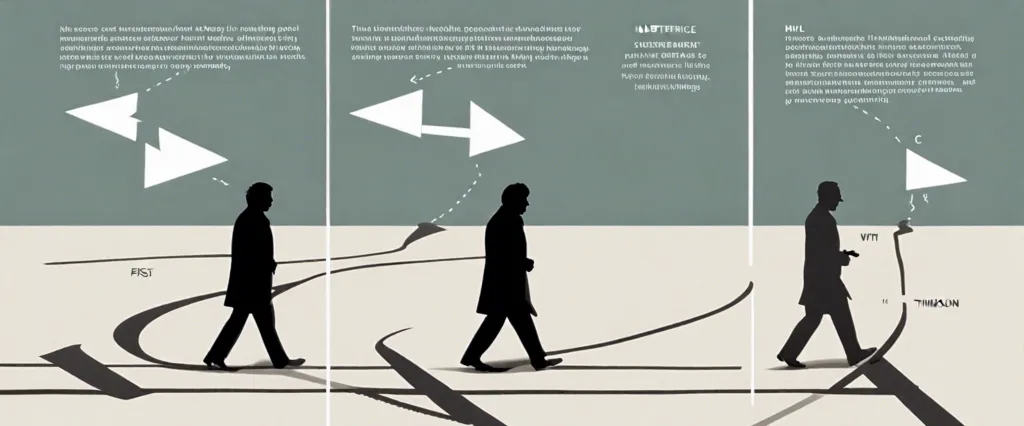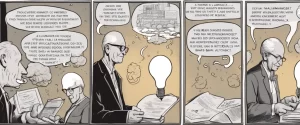
Title: Understanding the Human Mind and Economic Behavior: A Comparative Study of “Thinking, Fast and Slow” by Daniel Kahneman and “Basic Economics” by Thomas Sowell
Introduction:
In the vast realm of literature, books have the power to shape our understanding of the world by offering profound insights into complex subjects. Two such books that have garnered acclaim and reached readers far and wide are Daniel Kahneman’s “Thinking, Fast and Slow” and Thomas Sowell’s “Basic Economics.” These books tackle distinct disciplines — psychology and economics, respectively — providing unique perspectives on how the human mind operates and how individuals make economic decisions. By juxtaposing these two works, we embark on a thought-provoking comparative study, aiming to illuminate the similarities and differences between the psychological and economic realms, bringing us closer to a comprehensive understanding of human behavior.
Thinking, Fast and Slow” by Daniel Kahneman is an enlightening exploration of the cognitive processes that drive decision-making. Drawing on decades of research, Kahneman delves into the dichotomy between two mental systems: the intuitive, impulsive, “fast” thinking, and the reflective, deliberative, “slow” thinking. He elucidates how these systems operate in our everyday lives, meticulously uncovering the biases and shortcuts that often lead us astray. By intertwining personal anecdotes with rigorous studies, Kahneman challenges our preconceived notions about human rationality and lays the foundation for a psychological understanding of judgment and choice.
On the other hand, Thomas Sowell’s “Basic Economics” offers readers a comprehensive introduction to the fundamental principles and mechanisms that underpin economic transactions. Sowell, an acclaimed economist, presents a lucid and accessible account of how individuals, firms, and governments interact within the sphere of economic activity. His work dismantles common misconceptions and provides a counterbalance to prevalent narratives, illustrating how economic decisions, policies, and incentives can fundamentally shape societies. Through vivid examples and incisive analysis, Sowell endeavors to equip readers with the tools necessary to navigate the complex economic landscape we encounter daily.
While “Thinking, Fast and Slow” primarily focuses on the intricacies of individual thought processes and biases, “Basic Economics” seeks to unravel the broader impact of economic decisions on societies and nations. Though these two books belong to distinct disciplines, they are tied together by their exploration of human behavior and decision-making. By delving into the depths of these two works, we aim to uncover parallels, divergences, and potential convergences between psychological and economic realms, thereby illuminating the intricate relationship between the individual mind and the broader economic landscape.
Through this comparative study, we hope to engage readers in a multidimensional understanding of the human mind and economic behavior. By discerning the insights offered by Kahneman and Sowell, we seek to integrate the knowledge from psychology and economics, shedding light on how these domains intersect and inform one another. Ultimately, this exploration allows us to grasp the complexities that underlie our decision-making processes and the consequences they have for our daily lives, society, and the world at large.
Brief Summary of Two Books
Thinking Fast and Slow by Daniel Kahneman
“Thinking, Fast and Slow” is a psychological and behavioral economics book written by Nobel laureate Daniel Kahneman. The book explores the two systems of human thinking: System 1, which is fast, automatic, and intuitive, and System 2, which is slow, deliberate, and reflective.
Kahneman explains that System 1 thinking operates effortlessly and often relies on cognitive biases and shortcuts to make quick judgments and decisions. This system is prone to errors and can lead to biases such as overconfidence, framing, and confirmation bias. It is often influenced by emotions and stereotypes.
On the other hand, System 2 thinking requires effort and concentration. It is responsible for analytical and logical reasoning, but it is also prone to laziness and cognitive strain. This system is more cautious and deliberate, but it can be easily influenced by System 1 thinking.
The book delves into various cognitive biases and illusions that impact decision-making, such as the availability heuristic and the representativeness heuristic. Kahneman presents experiments and studies to illustrate these biases and explores the implications they have on judgment, risk-taking, happiness, and how they shape our understanding of the world.
Furthermore, Kahneman explores the concept of loss aversion, demonstrating how people tend to be more strongly influenced by potential losses than potential gains. Conversely, he delves into the concept of prospect theory, which highlights how people’s perceptions of risk and rewards are not linear but rather subjective to a reference point or frame of reference.
Throughout the book, Kahneman highlights the importance of understanding the flaws and limitations of human thinking and decision-making. By recognizing these biases and relying on analytical thinking, we can improve our decision-making and make more accurate judgments.
Overall, “Thinking, Fast and Slow” is a comprehensive exploration of human cognition and decision-making, shedding light on the biases and errors that affect our thinking and offering insights into how we can adopt a more rational approach to decision-making.
Basic Economics by Thomas Sowell
Basic Economics: A Common Sense Guide to the Economy by Thomas Sowell is a comprehensive introduction to the essential principles of economics. Dr. Sowell, an economist and scholar, presents economic concepts in a clear and accessible manner, making it an excellent resource for students and general readers alike.
The book begins by emphasizing the importance of understanding basic economic principles to make informed decisions in our daily lives. It explores topics such as scarcity, supply and demand, costs and benefits, and the role of prices in coordinating economic activities. Through numerous real-life examples and historical illustrations, Sowell demonstrates how these principles apply to various sectors of the economy, from agriculture to healthcare to international trade.
One of the main strengths of Basic Economics is Sowell’s ability to explain complex economic concepts without jargon, using simple language and relatable examples. He explains the potential consequences of government interventions in the economy, such as price controls and minimum wage laws, showing how they often have unintended negative effects.
The book also delves into issues such as taxation, inequality, and economic growth. Sowell highlights the importance of understanding the long-term effects and unintended consequences of well-intentioned policies, shedding light on how policies designed to help the poor or protect domestic industries can end up hindering economic progress.
Throughout the book, Sowell challenges common misconceptions about economics and provides evidence-based arguments to support his positions. He emphasizes the importance of thinking critically and examining the underlying principles and incentives that drive economic behavior.
In summary, Basic Economics by Thomas Sowell is a comprehensive and accessible guide that provides readers with a solid foundation in economic principles. It equips readers with the tools to understand and evaluate economic issues, fostering a better understanding of how individuals, businesses, and governments interact in the economy.
Comparison between Two Books

Similarities in Economics
While “Thinking, Fast and Slow” by Daniel Kahneman and “Basic Economics” by Thomas Sowell may not seem directly related at first glance, they do share some similarities when it comes to discussing economics. Here are three key similarities between the economic aspects explored in these books:
1. Understanding the Role of Rationality and Irrationality: Both books delve into the field of behavioral economics and recognize the impact of human rationality or irrationality in economic decision-making. Kahneman’s “Thinking, Fast and Slow” explains the interplay between two cognitive systems: the fast, intuitive, and often biased “System 1,” and the slow, deliberate, and reasoned “System 2.” In a similar vein, Sowell’s “Basic Economics” emphasizes the importance of recognizing that people respond to incentives and make rational economic decisions based on limited knowledge or personal biases.
2. Assessing the Impact of Cognitive Biases: Both authors highlight the presence of cognitive biases that influence economic behavior. Kahneman extensively discusses various cognitive biases throughout his book, such as the availability heuristic, confirmation bias, and loss aversion, highlighting how they shape economic decisions. Similarly, Sowell acknowledges cognitive biases in economic decision-making but also stresses the role of competition, the price system, and market forces in mitigating the adverse effects of these biases.
3. Considering Trade-Offs and Opportunity Costs: Both books recognize the significance of trade-offs and opportunity costs in economic decision-making. Kahneman emphasizes how individuals often fail to consider opportunity costs while making choices, leading to suboptimal decisions. In “Basic Economics,” Sowell highlights the concept of trade-offs by exploring how resources are limited and must be allocated wisely, thus reinforcing the importance of understanding the costs associated with different choices.
Ultimately, although Kahneman’s “Thinking, Fast and Slow” delves more deeply into cognitive psychology and biases, both books recognize the importance of understanding the human decision-making process in economic contexts. They demonstrate how individuals’ tendencies toward rationality, irrationality, biases, and decision-making heuristics significantly affect economic choices and outcomes.
Divergences in Economics
Thinking, Fast and Slow by Daniel Kahneman and Basic Economics by Thomas Sowell are two influential books in their respective fields. While both books touch upon the subject of economics, they approach it from different perspectives, leading to diverging views about economic theories and principles.
One major divergence between the two books lies in their methodology and approach to studying economics. Thinking, Fast and Slow is primarily a book about cognitive psychology, with economics being one of the many fields that the author explores to understand human thinking and decision-making processes. Kahneman, a Nobel laureate in economics, presents complex theories and experiments from various areas, including economics, to explain how humans make both rational and irrational decisions. However, he does not delve deeply into economic concepts or provide a comprehensive framework for understanding the subject.
On the other hand, Basic Economics is a book solely dedicated to understanding and explaining fundamental economic principles. Thomas Sowell, an economist himself, takes a more traditional and conservative approach to economics, emphasizing free-market capitalism and its benefits. The book covers a wide range of economic topics, such as supply and demand, taxes, regulations, and trade, providing a comprehensive understanding of basic economic principles and their applications.
Another divergence between the two books is their focus on either the individual or the system. Thinking, Fast and Slow primarily focuses on individual decision-making processes and biases, exploring how individual psychological factors can influence economic behavior. Kahneman argues that humans are prone to cognitive biases and irrational thinking, which affect economic decision-making on both micro and macro levels. In contrast, Basic Economics looks at the bigger picture and highlights the role of institutions, market forces, and government policies in shaping economic outcomes. Sowell emphasizes how economic incentives and market mechanisms drive prosperity and economic growth.
In terms of political ideologies, the books also differ. Thinking, Fast and Slow tends to have a more liberal perspective, highlighting the flaws and limitations of unregulated markets and advocating for greater government intervention. However, Kahneman also acknowledges that human decision-making is fallible, regardless of political ideologies. Basic Economics, written from a conservative standpoint, strongly advocates for free-market principles and minimal government interference, arguing that market forces are more efficient in allocating resources and driving economic growth.
In conclusion, while both Thinking, Fast and Slow and Basic Economics touch upon economics, they approach the subject from distinct perspectives and with different goals. Kahneman’s book primarily focuses on cognitive psychology and decision-making processes, using economic examples to illustrate broader human biases. On the other hand, Sowell’s Basic Economics is a comprehensive exploration of economic principles, emphasizing the free-market perspective. These divergences result in differing views on economic theories, the role of government, and the importance of individual decision-making.

Conclusion
Both books, “Thinking, Fast and Slow” by Daniel Kahneman and “Basic Economics” by Thomas Sowell, offer valuable insights in different areas of study. The choice between the two depends on your personal interests and goals.
“Thinking, Fast and Slow” delves into the field of psychology and cognitive biases. It explores how our minds work, how we make decisions, and the various biases that affect our thinking. This book is particularly relevant if you are interested in understanding human behavior, decision-making processes, and improving your own decision-making skills.
On the other hand, “Basic Economics” is a comprehensive guide to the fundamental concepts and principles of economics. Thomas Sowell provides a clear understanding of economic theory, along with extensive real-world examples and historical illustrations. If you are interested in gaining a thorough understanding of economic concepts and principles, and how they impact societies and individuals, this book would be a great choice.
Ultimately, both books offer valuable knowledge and insights in their respective fields, so the decision between the two depends on your specific interests.


